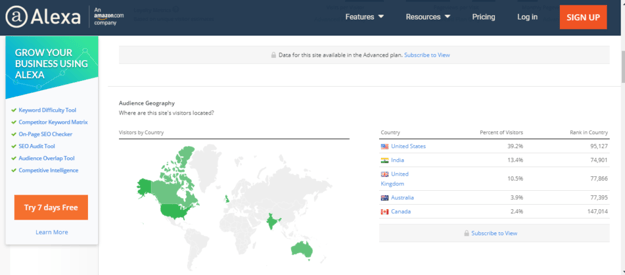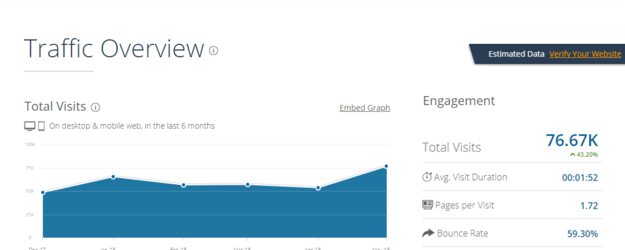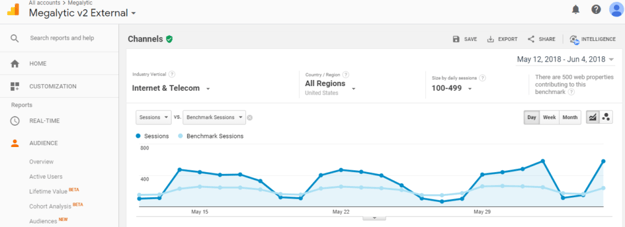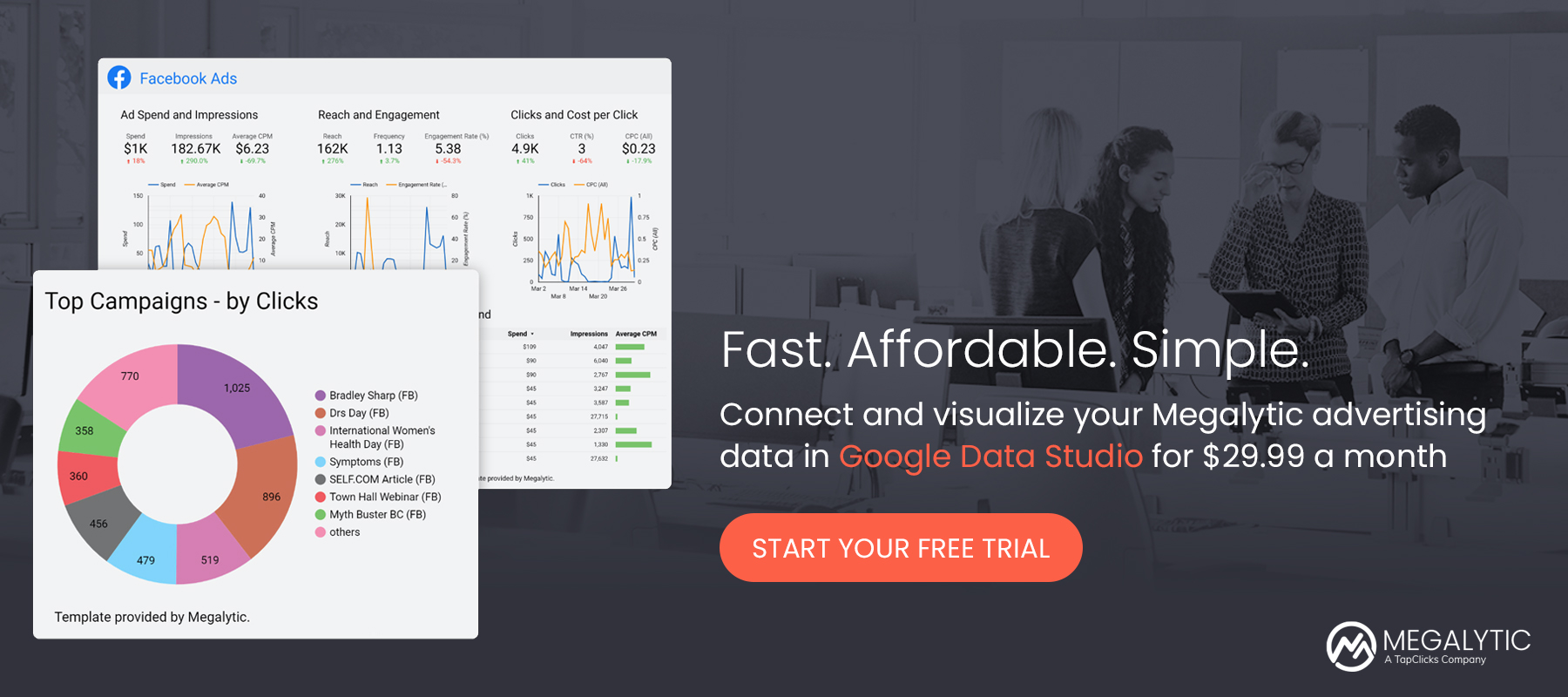May 21, 2024
Comparing Your Competitors' Website Traffic Stats
By Megalytic Staff - July 12, 2018
Alexa
Alexa is a website and 3rd party data provider currently owned by Amazon. While much of their intelligence requires a paid account, there is still a wealth of information that can be accessed for free. The site specializes in web traffic analytics, and other types of digital performance data, providing insights on over 30 million different websites.
To use the site, you enter in a competitor website in the search bar at the top of this page: https://www.alexa.com/siteinfo/ .
Alexa will return a basic free report for the website, starting with the site’s Alexa Rank, which measures the popularity of websites based on the number of monthly users and the number of pageviews those users drive. Alexa will break down traffic estimates by channels and will provide some data on the top keywords driving traffic to the website.
Other demographic information such as geography, gender, education level and location are also provided. If organizations still aren’t entirely sure of who their online competition even is, there are also Audience Overlap and Similar Sites features offered as well. To access those, you just enter your own website, and Alexa will provide reasonable competitor estimates.
SimilarWeb
SimilarWeb is another 3rd party data provider that specializes in digital marketing intelligence. It sources information from millions of mobile and desktop devices, in addition to data derived from partnerships and publicly available sources. This site also requires a paid subscription to access all of its information, but like Alexa, it offers some free data as well.
To use the site, you enter in the name of your website or a competitor’s into the search bar at the top of this page: https://www.similarweb.com/ .
SimilarWeb will return a report that starts with a similar global and regional rank score, followed immediately by traffic estimates and site engagement figures. Traffic estimates are further broken down by channels, including search engines and referring domains. The very end of the report also provides a list of estimated top competitors and some audience overlap data, similar to the competitor reports available from Alexa.
SEMRush
SEMRush is a 3rd party data provider that specializes primarily in search engine traffic data, both organic and paid. It also provides information on digital display advertising and product listing ads (PLA). Like the previous two sites, it offers a blend of free and paid information that users can access. Also like the previous two sites, to begin using the site, you enter in the name of your domain or a competitor’s into the main search bar on this page: https://www.semrush.com/ .
SEMRush will generate a free report that shows the estimated organic and paid search traffic to the website, along with historical trends for that data. Other useful information includes top referring (linking) domains, top keywords driving search engine traffic, and top landing pages for organic search.
SEMRush also offers a range of competitor intelligence, including top competitor lists, competitive positioning maps, and keyword and backlink overlap reporting. If users wish to compare multiple competitors’ websites against their own, there is a neat Domain vs Domain feature that can be found here: https://www.semrush.com/info/domain_vs_domain/
Google Analytics Benchmarking
A very interesting feature of Google Analytics that not many people know about is Benchmarking . First introduced in 2014, this feature allows website stakeholders to compare their own performance to competitive benchmarks. The benchmarks can be sourced by industry/vertical, by region, and by website size by total sessions. These selections can also be combined to provide a very tailored type of benchmarking. The industry vertical data will likely provide the most interesting insights for analysts.
To utilize the feature, use the left-hand navigation bar and first click on Audience. Then, secondary reports open up, which include Benchmarking near the very bottom of the list. There are 4 main Benchmarking options, the first of which is by Channel. This will allow organizations to compare channel by channel traffic breakdowns to benchmarks sourced from other similar websites based on Google’s Analytics data. The Channel benchmarking is set first by Industry/Vertical, and users have the ability to refine the country/region and website size of the competitors you are benchmarking against.
Using The Data
We recommend focusing on 3 to 5 of the most consistent competitors that you can identify from these websites along with your own knowledge of the competitive landscape. In some cases, it makes sense to evaluate your positioning among your digital competitors as well as those that are in your geographical market to understand where you stand in both contexts.
Then, we recommend running each of the websites mentioned to get a better sense of estimated total monthly traffic, as well as any channel-specific breakdowns. Compare the range of figures you find by evaluating specific competitors to what’s shown in Google Analytics’ Benchmarking options to identify realistic and useful performance benchmarks. It’s not realistic or recommended to treat these figures as definitive gospel, but rather to use them as a gauge. This data is a ballpark estimation of where different competitors are in terms of traffic volume and sources.
Moving forward, periodically compare your own website growth and performance against these benchmarks to better understand how your website is doing in an ever-shifting competitive environment. These benchmarks will help organizations compare their website traffic growth, or declines, to sound benchmarks while also considering the share of voice and share of market. These are both factors that also help you monitor your performance and can inform your reporting and overall strategies.
Conclusion
While we know that website traffic isn’t the end-all be-all of digital performance, understanding how much traffic your competitors are getting and which sources that traffic is coming from can help you get a solid sense of how your own numbers measure up. It’s not worth obsessing over marginal gaps, remember these numbers are a gauge, but if someone is pulling away or there’s a new player gaining speed in the space, that is worth noting and investigating further.
Click over to these websites and start conducting competitive intelligence today. Find a cool feature or have a question? Drop us a line in the comments!





